Oak wilt
Oak wilt is a disease affecting oak trees caused by the fungus Bretziella fagacearum (previously known as Ceratocystis fagacearum). Symptoms vary by tree species but generally consist of leaf discoloration, wilt, defoliation, and death. The fungus spreads from diseased to healthy trees overland by insect or other airborne vectors and underground by naturally grafted tree roots. Management of the disease historically meant preventing infection by not wounding oaks during certain time periods, removing diseased oaks that will produce spores (sanitation), and breaking root connections with vibratory plows, trenchers, rock saws or hoes. Present methods focus on reducing or eliminating monocultures and restoring ecosystems correctly using soils baseline information. Fungicides are used for preventive treatments in urban areas. Oak wilt poses a danger for oak wood products and shade trees in urban areas.
| Oak wilt | |
|---|---|
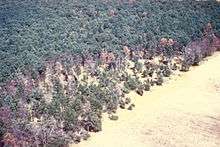 Aerial photograph of an oak wilt center (St. Paul, MN). Robert L. Anderson, USDA Forest Service, Bugwood.org | |
| Causal agents | Bretziella fagacearum |
| Hosts | oaks |
| Symptoms | leaf discoloration, wilt, defoliation and death |
| Bretziella fagacearum | |
|---|---|
| Scientific classification | |
| Kingdom: | |
| Division: | |
| Subdivision: | |
| Class: | |
| Order: | |
| Family: | |
| Genus: | Bretziella |
| Species: | B. fagacearum |
| Binomial name | |
| Bretziella fagacearum (T. W. Bretz) J. Hunt | |
Hosts and symptoms
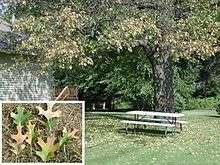
Oak wilt is one of three devastating North American vascular wilt diseases and was first seen in Wisconsin in the 1940s. Within the last decade, it has spread into new counties in northern Wisconsin, counties northwest and northeast of the Twin Cities in Minnesota and also new locations in northeastern states. The other two vascular wilts and their destructive time periods are chestnut blight (1900-1950) and Dutch elm disease (1928 - 1980).
Vascular wilts, including oak wilt, kill by fooling the tree into killing itself; the fungus or pathogen does not kill the tree or host. The tree's reaction-to fungus entering into sapwood, by walling off the fungus, causes shutdown of water supply upward, then wilting, thus killing off the fungus doesn't eradicate the problem, keeping the water supply open and flowing upward is the main problem. Certain elements like Boron are crucial to the trees' physiological well being, especially with translocation of fluids. Additionally, copper and chemotherapies have been used to keep the tree or plant from killing itself via wilting.
Oak wilt infects and kills all oak species but affects the two main groups, red and white oaks, differently. Mostly, red oak group trees die faster from oak wilt disease than white oak group trees, and red oak group trees spread oak wilt two ways - underground and overland - where white oak group trees spread oak wilt one way only, underground. Oaks in North and Central America are sorted into two groups based mostly upon the porosity and corresponding leaf shape. The white oak group have rounded leaf edges and pores, also known as xylem or sapwood, are clogged with tyloses. The red oak group have pointed leaf edges and pores are large and open.
Common names of oaks are based upon folklore or customs, which leads-to black oaks being in the red oak group. In the upper midwest, red oak group trees like black, northern red and northern pin are most threatened by oak wilt for two reasons: they die faster and they produce spore mats, known also as spore pads or pressure pads. Spore mats are the fruiting bodies of the oak wilt fungus and, when ripening or sporulating, can spread disease overland. Overland spread of oak wilt from white oaks is not a problem because white oak group trees rarely produce spore mats. When infected, oaks in the red oak group die over the course of a single summer. These oaks typically die from the top of the tree down as leaves become a bronze color and fall off the tree. Another symptom is discoloration of the vascular tissues. Brown streaks or spots can be seen under the bark in the sapwood; oak wilt specialists call this stage II.
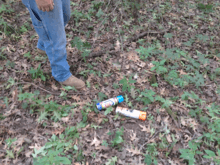
Oaks in the white oak group, white, swamp white, and bur, die slower when infected (white oak in particular) and can live for several years after infection, losing a few branches each season from the top down. Bur oaks tend to die faster than others in the white oak group, although not as fast as trees in the red oak group. Symptoms in white oak are similar to those in red oak. Quercus virginiana, the southern live oak, is the most common of 31 species of evergreen oaks and is in the white oak group.
Oaks with oak wilt stand out with their dead crowns compared to a green canopy in the summer, so much so that oak wilt infections can be spotted from the air.
Northern pin oak (Q. ellipsoidalis) infection and spread are extreme when monocultures exist. Northern pin oak forests are typically found on entisol soils (aka barren, river terrace or lakebed sands) in Wisconsin and Minnesota, and these forest ecosystems are often misidentified as oak savannas, which are prairie - not forest - ecosystems. Mistaking northern pin oak forest monocultures for oak savannas, then burning them for oak savanna restoration, has made state and federal lands north of Minneapolis-St Paul the largest oak wilt disease reservoirs in Minnesota.[1]
Wilt and death in Live oak usually occurs within six months of infection. Live oak foliar symptoms differ from those of red and white oak. Infected live oak leaves develop yellow colored veins then eventually die and turn brown before falling off the tree.[2]
Disease Cycle
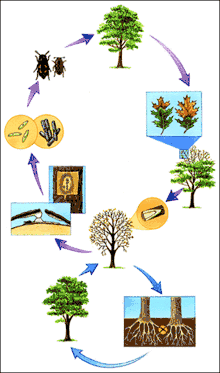

The oak wilt fungus spreads in two basic ways: transfer of spores from diseased to healthy trees overland by insect and other vectors and movement underground of the fungus from a diseased tree to a healthy tree through root grafts.
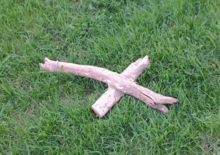
Overland
Spores are the seeds of a fungus. If conditions - temperature, moisture content, wood pH - are right after the oak has wilted and died, spore mats form under the bark of the tree.
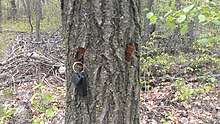
Spore mats produce asexual spores called endoconidia, which are barrel shaped and produced in chains.
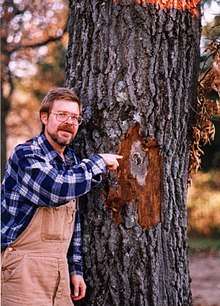
Conidia are often dispersed by air and rain and also by insects and other agents.[3] If compatible mating types are present, these mats will also produce sexual spores called ascospores in fruiting structures called perithecia. Ascospores are spread by water, insects and other agents.[4]
Certain species of sap beetles plus other insects, birds and animals are attracted to the fruity smell of oak wilt spore mats.
Spore mats/pressure pads increase in size, eventually breaking the bark covering them, which sends the spores' fruity odor out into the area, attracting sap beetles and other insects, birds and animals, like squirrels. The oak wilt disease "selling" business is now open.
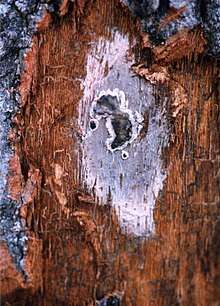
One example of overland spread is sap beetles picking-up spores from diseased red oaks then depositing them onto fresh wounds made on healthy oaks. The oak wilt "buying" business is now open...for 2 days only. New infections in areas with no history of oak wilt occur by this overland transmission route.
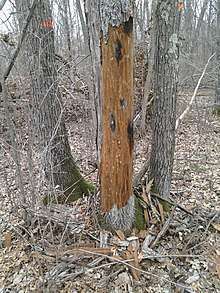
However, not all all red oaks that died in one year produce spores/sporulate the next year between April and July. Small red oaks 6 - 10 inch dbh tend to sporulate the autumn of the year they got infected, or not at all; small trees, once dead, dry out faster than large trees and oak wilt fungus cannot survive in that dry environment. Roughly 15 to 30 percent of red oaks greater than 10 inch dbh will sporulate April - July the year following infection. The other 70 - 85 percent of infected red oaks will sporulate, either before April or after July the following year or, not at all, because wood rotting fungi (Trichoderma) is already in the oak and out-competes/kills the oak wilt fungus.
Underground
Oak wilt moves from diseased trees to healthy trees through roots that have become interconnected (root grafts). Transmission via root grafts is the most common means of spread, and makes up more than 85 % of new infections every year. Oaks within 50 - 150 feet (15 - 50 meters) of a diseased oak can be infected via root graft transmission. In this case, spores (also endoconidia) produced inside the tree travel upward through vascular tissue in the wood, known as the xylem. Most root grafts form between oaks of the same species and of the same generation; it's rare for a 60 year old oak to root graft with a 15 year old oak of same species. Red oak roots graft more commonly than do white oak roots, and grafts between red and white oaks are very rare.
Environment
In the Midwest and eastern United States, conditions are usually favorable for spore production and beetle activity during spring and early summer. In Texas, mat formation is most common in late fall and winter. Frequency of root graft formation, and therefore root graft transmission, is affected by soil type and stand composition (diversity of tree species). See disease cycle and management sections for details.
Management
Landowners and managers have to remember that oaks love light and heat more than other forest tree species; they are one of the few tree species that survive in the prairie regions. Releasing or thinning oaks from competition, which gives remaining oaks more light, moisture and nutrients, should always be the primary goal, whether or not oak wilt is present. Oak wilt is similar to Dutch elm disease but more controllable. Beetles carrying oak wilt do not have chewing mouth parts, and need some other creature or physical damage to wound the tree, whereas beetles that carry Dutch elm disease do have chewing mouth parts. Prevention is essential, as there is no permanent cure. To prevent overland spread, oaks should not be wounded, including pruned, in the spring months in the east and Midwest or February through June in Texas. Care should be taken to prevent injury to oaks during this period, particularly during construction activities. Painting wounds less than 48 hours old is advised if oaks are wounded in the spring by wind or human caused damage. Painting wounds more than 48 hours old is not helpful because the oak by that time has compartmentalized (https://en.wikipedia.org/wiki/CODIT) the injury/wound. Reducing the source of spores is helpful. When a dead red oak has not sporulated - hasn't reached stage III yet - before the following spring, it should be chipped or mulched onsite, then burned at a CHP (combined heat & power) plant. If that is not possible, wood greater than 5" diameter can be split into firewood size pieces then left onsite to dry before spring, or covered with plastic sheeting to effect composting. Heat from composting should destroy the fungus. Logs or firewood from red oak group trees that have died of oak wilt should never be moved to unaffected areas.
Root Graft or Overland Infection?
The first oak in any infection center is always infected from overland spread; additional oaks killed from the disease in that infection center are killed from underground root graft spread. Before control plans are made, the landowner or land manager (forester, arborist) needs to find out how the infection got there and what type (underground, overland or both) it is. Root graft infections move slowly, so additional root graft infections may not be seen for 1-3 years. It is impossible for one oak infected via overland to infect & wilt seventeen additional oaks via root graft transmission, in less than 4 months (see Kerrick, Minnesota oak wilt photo, below). If one sees more than half dozen oaks wilting during one summer in a new infection with healthy oaks in between means infections started from overland route/storm event, not underground. In that case, each wilting oak is a separate infection center, not part of one infection center. One should also look at the site to confirm whether or not it's an overland infection. Overland infections occur on or near hilltops or other exposed areas, where taller oaks get wounded, then infected, and shorter oaks look healthy. A spread pattern with no obvious direction usually means multiple airborne/overland infections. Root graft infections can "fan" out in 360 degree pattern, but tend to head faster in one or two directions because of soil and topography changes and tree species arrangement/diversity.
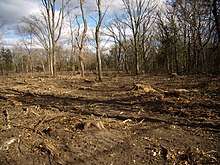
A birds-eye view of an infection center, during the middle of summer, going from oldest to newest based on colors would show: stone dead gray, brown, yellow, orange, green. So, if one doesn't see these color sequences or, a hub and spoke pattern radiating out, they are probably looking at multiple airborne infections. Looks can be deceiving because 2-6 large wilting oaks may often have only 1-2 trees left nearby to infect. Compared-to one oak deep in the woods that is just starting to wilt that can lead-to 2-5 dozen more nearby oaks dying in the next 5 years. So, proper ground ID & diagnosis is crucial for stopping this disease. Stopping spread with multiple infections means plowlines will be further out, so natural barriers should be located first. In the Lake States, a vibratory plow line is installed 54 to 72 inches deep in the ground and 60 - 150 feet away from the diseased oak. Plowing done correctly ruptures healthy roots that could, in the future, transmit oak wilt to neighboring healthy trees. Installing plow lines far enough away from diseased oaks is key to preventing root graft disease transmission. In southern states like Texas, where heavy clay or Caliche soils are prevalent, rocksaws are commonly used in lieu of vibratory plows. Infected oaks should not be cut down before vibratory plowing because, doing so will speed up oak wilt root graft spread to nearby healthy oaks. Base of trunk or root flare injections of azole or copper based fungicides can help contain foliar - or top down - infections but are costly and have less success containing root graft - bottom up - transmission of oak wilt.
Strategies - Containment vs. Control
There is a big difference between containment and control. Containment happens within a few hours or days; control takes weeks or many months. The lack of appreciation and understanding for disease control methods and strategies has led to a lot of landowners and taxpayers thinking there is no way to control oak wilt. Despite 40-50 years of work & study showing oak wilt as one of the easiest to control forest diseases in North America. Putting a plowline around an oak wilt infection center is containment, which is not controlling the disease. Going inside the containment lines or natural barriers/edges/cover type changes and making sure all oak wilt infections are dead and gone is control. Landowners and managers have to ask themselves this question (are we going to be containing or controlling this disease?) before starting a disease control project, whether in a small yard or on hundreds of acres. Control also means removal and processing - mostly by logging - of future spore-producing oaks. For the last 40-50 years, experienced professionals throughout North America have been doing insect & disease control year round, not four or six months per year. They stop oak wilt spread by identifying future spore producing red oaks, which trees to protect from wounding, which trees not threatened by root graft infection then, respond same day to tree health changes. Agriculture and construction work starts in April-May each year, so it behooves oak wilt specialists to continue disease control work and prevention right through spring and early summer.
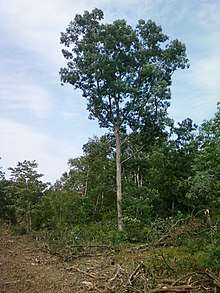
After 2005, treatment goals shifted towards "passive oak wilt control" on properties less than 5 acres and treating to natural barriers or edges for large acreages. Passive control means letting the disease burn out over a few years which allows other native tree and shrub species to take over. Treating to natural barriers means restoring to native forest or savanna species by harvesting out to where oak wilt can no longer expand via root grafts. All oaks of the species that is infected are logged out, whether they are infected or healthy. Passive oak wilt control on large acreages creates short and long term problems for oaks. White oak group trees are at risk for infection from nearby sporulating red oak group trees for the short term; invasive species can take over and monocultures of oaks can re-develop that sustain oak wilt infections for 50-100 more years making for long term risks. Treating to natural barriers/edges or cover type changes is by far the best method to use when controlling oak wilt on large acreages.
Importance
Oak wilt is a devastating disease, killing trees rapidly in a single season. It is an important disease in urban areas where a few oak trees in a homeowner's yard may be of great value. If one tree in the homeowners yard becomes infected it will die. Not only will the homeowner need to pay to remove the dead tree, they will also need to protect the rest of the oak trees in their yard or face the prospect that remaining oaks will continue to die. Loss of trees from a property can also lead to a decrease in property value. Even if a homeowner is vigilant about pruning at the correct time, storms and construction can damage trees and introduce oak wilt into a neighborhood. In forest systems, oak wilt is an important disease of oak produced for hardwood lumber and railroad ties.
July 1, 2011 Windstorm in Minnesota and Wisconsin
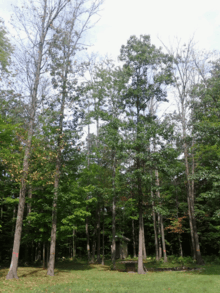
In 2012 and 2013, oak wilt disease showed-up in areas of east central Minnesota and northern Wisconsin where it had never been seen before. The infections appeared to have coincided-with the July 1, 2011 mesoscale convective vortex (MCV) windstorm,[6] which had windspeeds of over 100 mph, because foresters found that first oaks infected were 7-1-11 storm-damaged oaks. They also knew infections happened within 48 hours of storm damage. West-facing slopes on the east bank (Wisconsin side) and terrace crests in the St. Croix river valley were hit hard with wind damage and oak wilt infections. Hilltops and bottoms and field edges, where oaks were more exposed, also had more serious wind and oak wilt damage. Approximately 3/4 million acres in Minnesota, possibly 10 times that area for Wisconsin[7] and up to the Keweenaw Peninsula in Michigan, were affected by the storm. Millions of freshly wounded oak trees were now open to infection from trillions of oak wilt spores carried-in by the storm.
Infection Levels-Spore Loads
It's difficult for oaks to get infected in mid summer - after July 1 - because it's too hot for red oaks to sporulate and latewood cell development has been underway since early to mid-June. Two factors changed this around on July 1, 2011: the trillions of oak wilt spores carried-in from west-southwest and the windstorm's tearing/shredding/breaking-apart trees which re-opened oaks' 2011 & 2010 earlywood cells (earlywood is also called springwood, and latewood goes by the name summerwood in some areas). The oak wilt fungus is too big to fit within the smaller latewood cells, but can fit within and move upward through the much larger earlywood cells. This storm damage increased the chances of infection 1,000 - 1,000,000 times the usual. Instead of one new infection per 1,500 acres, foresters were seeing one new infection per 10 acres. The manageable level of oak wilt disease is one infection per 640 acres.
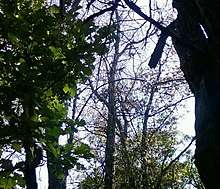
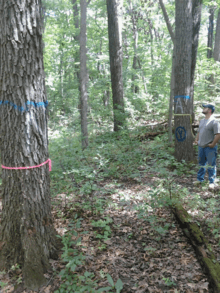
One year after the storm, in summer 2012, oak wilt specialists found 10 - 20 infections per 100 acres both in Rushseba Township, Chisago County Minnesota and at St. Croix State Park[8] in Pine County, Minnesota. Wounding & infecting at ten oaks per 100 acres, one oak per 100 acres or one oak per 200 acres presents a serious threat to the oak resource. St. Croix State Park's northern-most infected oak and southern-most infected oak were 10 miles apart. This broad coverage of oak wilt blanketing millions of acres is achieved only with huge spore supplies and re-opening of that years' earlywood cells.
Detection
The use of spectroscopy and spectroscopic imaging show promise for accurate detection of the disease [9] and are currently being tested for large scale detection and monitoring.
Sources
Sources with that many hundreds of acres of oak wilt spores were upwind (240 degrees/west southwest) in the three oak wilt "reservoirs" on state and federal lands in Sherburne, Anoka, Isanti and Chisago counties of Minnesota (see Hosts and Symptoms). The sources of oak wilt spores were not nearby.
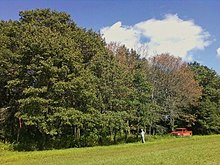
Rate of Spread
Before the windstorm, oak wilt could spread north at three quarters of a mile per year and east or west at one and one half miles per year.[10] During the storm, oak wilt spread at up to 100 miles per hour. In the two years following the 2011 storm, infections were found at new locations in four Minnesota and at least one (Sawyer) of three Wisconsin counties.[11][12] These 2011 infections have serious ecological/economic impacts, including loss of stumpage and real estate values, and will only get worse if summer (aerial with ground follow up) surveys aren't established as soon as possible.
Host-Parasite Interaction
Hardwood vascular wilt diseases are characterized by blockage of the tree's water-conducting vessels by either the physical presence of the pathogen (mycelium and spores), or through the host's own response to infection. Oak trees, in response to wounding or infection often produce tyloses, balloon-like outgrowths of the vessels' cell walls that can function to wall-off pathogens and prevent infections from spreading. Red oaks appear to lack a host-response mechanism that restricts the pathogen's movement, and infection usually kills the tree by wilting the entire crown. White oaks, which produce tyloses more quickly and in greater numbers, are more resistant to the disease, though the exact mechanism for this resistance is unknown.
Origin
The causal agent, Bretziella fagacearum, is found only within the borders of the United States, but the origin of the pathogen is not known. Recent evidence suggests that the pathogen was introduced into the United States, possibly from Central or South America, or Mexico.[13] The disease currently affects much of the eastern and central US, from Virginia to Minnesota to Arkansas, with pockets of infection as far southwestward as the Hill Country of central Texas. One area of infection has recently been discovered as far northeastward as Glenville, New York.[14] It is particularly common in the Midwest.
See also
Mortality of oaks
- Japanese oak wilt - caused by Raffaelea quercivora in Japan
- Sudden oak death - caused by Phytophthora ramorum
References
- Nelson, Steven (2011). Savanna Soils of Minnesota. Minnesota: Self. pp. 21-22,29-30. ISBN 978-0-615-50320-2.
- "How to identify and manage oak wilt in Texas" (PDF). Texasokwilt.org. USDA Forest Service, Southern Research Station. June 2003. Retrieved June 12, 2017.
Leaves on diseased live oaks often develop chlorotic (yellow colored) veins that eventually die / turn brown
- Käärik, A. (1983)."Atlas of Airborne Fungal Spores in Europe". Berlin, Heidelberg, New York: Springer-Verlag. p. 7 ISBN 3-540-11900-0.
- Käärik, A. (1983)."Atlas of Airborne Fungal Spores in Europe". Berlin, Heidelberg, New York: Springer-Verlag. p. 7 ISBN 3-540-11900-0.
- https://commons.wikimedia.org/wiki/File:24_-_25_May_2016_NOAA_NWS_Storm_Maps.pdf
- NWS NOAA https://commons.wikimedia.org/wiki/File:Storm_1_01July2011_SW_to_NE.pdf
- WI DNR https://forestrynews.blogs.govdelivery.com/2018/12/03/new-northern-oak-wilt-detections/
- Minnesota DNR Forestry 2012 Forest Health Annual Report, p. 37
- Fallon, B., A. Yang, C. Lapadat, I. Armour, J. Juzwik, R. A. Montgomery, and J. Cavender-Bares. 2020. Spectral differentiation of oak wilt from foliar fungal disease and drought is correlated with physiological changes. Tree Physiology 40:377-390. https://academic.oup.com/treephys/article/40/3/377/5728678
- Minnesota DNR Forestry (2001).
- Wisconsin DNR Division of Forestry, Annual Report 2012 p. 6
- WI DNR https://forestrynews.blogs.govdelivery.com/2018/12/03/new-northern-oak-wilt-detections/
- Juzwik, J.; Harrington, T.C.; MacDonald, W.L.; Appel, D.N. (2008), "The origin of Ceratocystis fagacearum, the oak wilt fungus", "Annual Review of Phytopathology",46: 13-26,
- "Oak Wilt - NYS Dept. of Environmental Conservation". www.dec.ny.gov. Retrieved 2020-05-04.